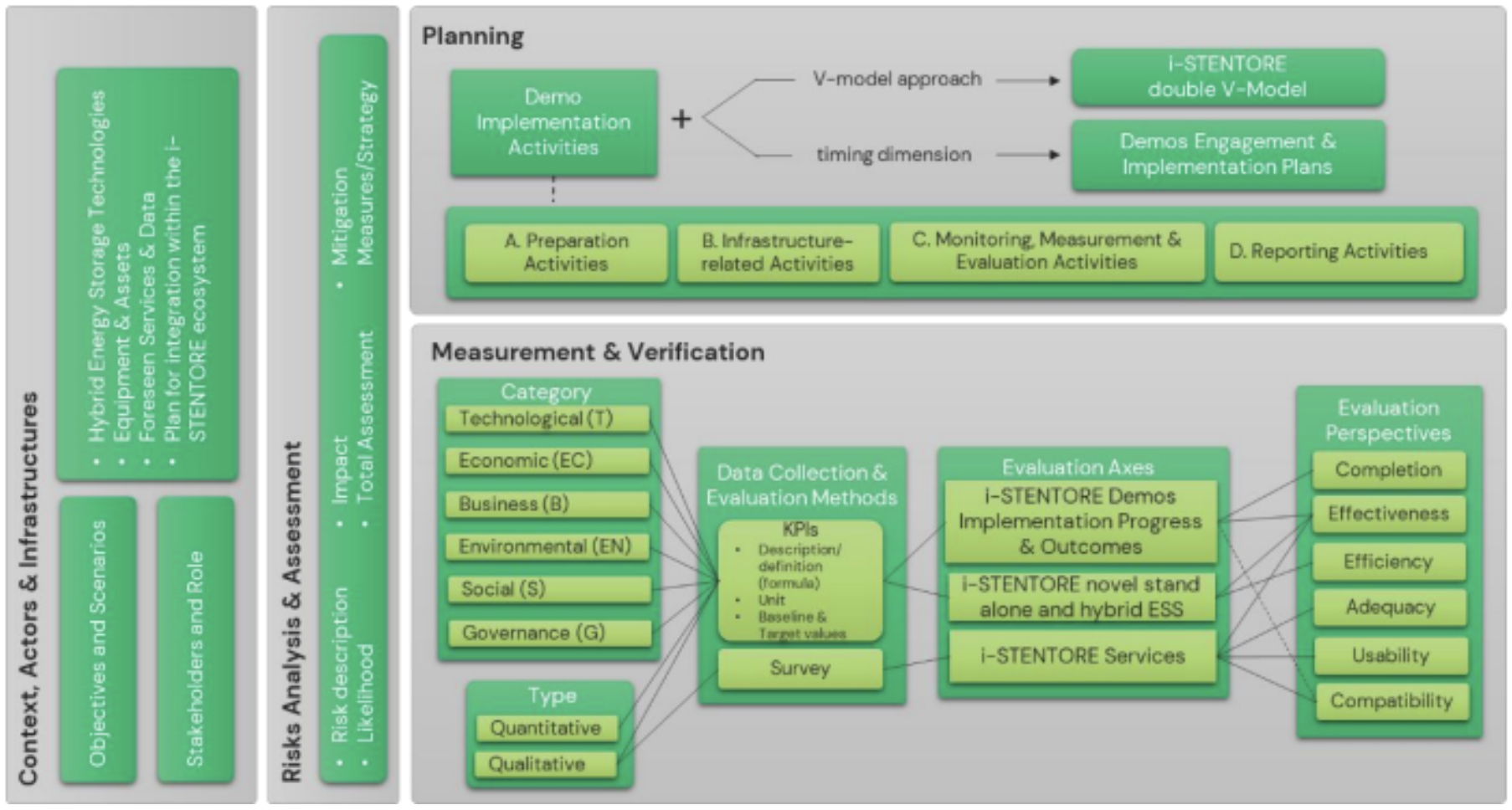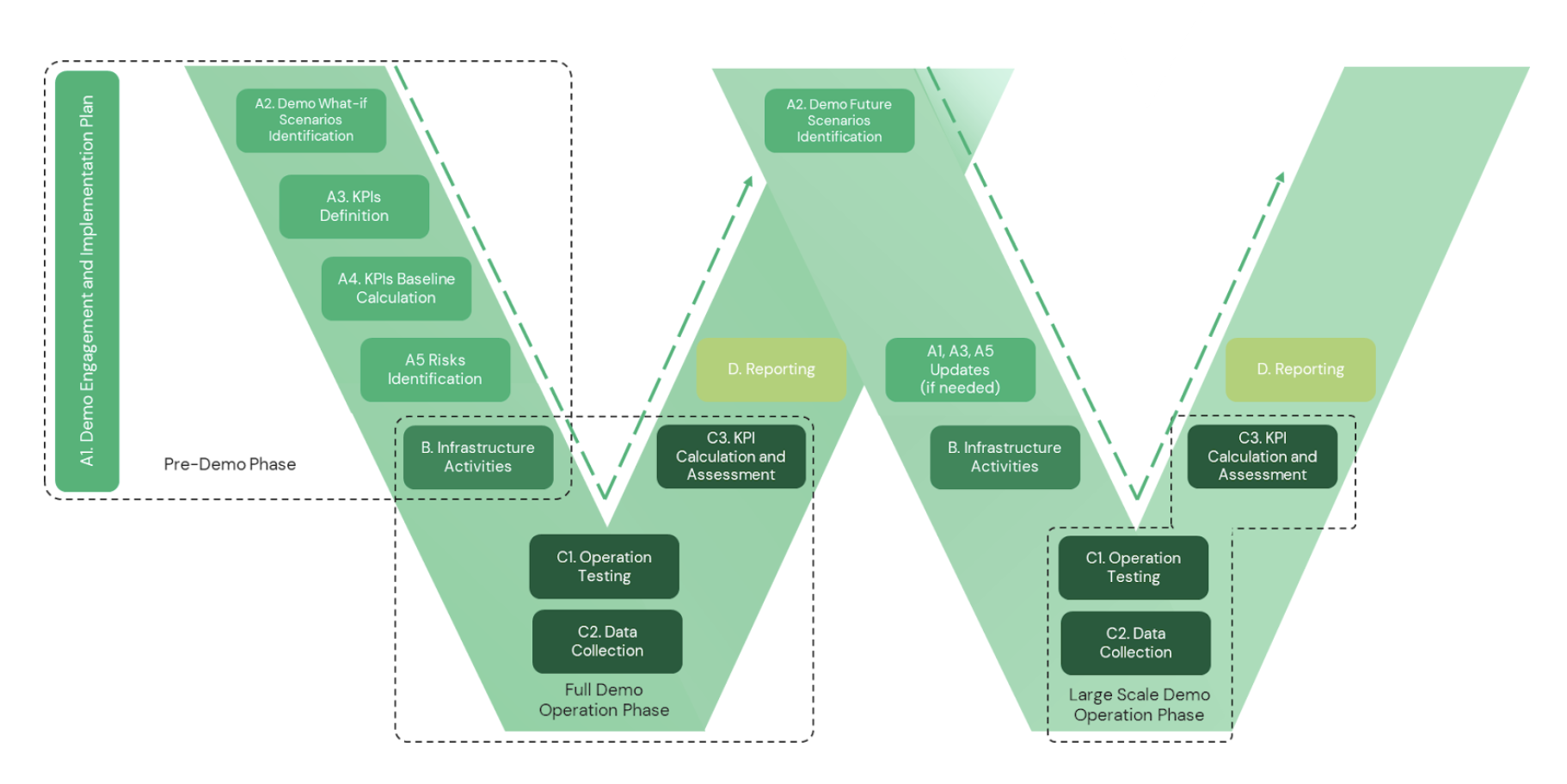i-STENTORE introduces an umbrella framework aiming to showcase stand-alone and hybrid storage solutions, highlighting the multi-purpose use of storage, not only as an energy buffer, but also as an active grid component capable of providing services and contributing to grid resilience, stability and efficient operation. The overall i-STENTORE framework will be applied, implemented, and validated in 5 real-life demos, and 1 Living Lab, across 6 countries with different system and actor needs, economic conditions or different climates. The aim of these demos will be twofold: first, demonstrating the i-STENTORE storage technologies’ performance and architecture either as SASSs or HESSs. Second, creating proof of concept on the way that storage technologies can be transformed from passive “energy buffers” into valuable assets that can effectively interact with renewables, specific demand sectors and existing, established infrastructure, offering grid-supporting services.
Demonstration activities are meant to take place following a three-loop cycle structure that encompasses a Pre-demo phase (M5-M16) involving early technology assessment and experimentation, a Full Demo Operation phase (M21-M25), foreseeing the deployment of the complete i-STENTORE framework within controlled environments at the demo sites and targeting performance and usability testing, as well as a Large Scale Demo Operation phase (M30-M33), entailing the final demo validation, and thereby focusing on scalability testing.
In line with the demonstration activities’ goals and aspirations, evaluation in i-STENTORE will be multi-dimensional, addressing accordingly the different types of outcomes that will derive from the project demos. The specifics of the i-STENTORE demos evaluation, as well as the identification, definition and scheduling of all related activities are prescribed by the i-STENTORE Planning, Measurement and Verification Framework.

The Framework consists of four pillars, two horizontal, i.e. the “Planning” and “Measurement and Verification”, and two vertical ones, namely the “Context, Actors and Infrastructures” and “Risk Analysis and Assessment”. The Planning pillar involves the identification of the demo implementation activities, their structuring into the i-STENTORE double V-model – a V-model (Verification and Validation) approach that takes into account the existence of two demo operation phases, i.e. the Full Demo and Large Scale Demo Operation phases – as well as the integration of the timing dimension that results in the demos’ engagement and implementation plans, which act as the means for tracking and monitoring the demos’ status and progress.
The demo implementation activities are organized into four main streams, namely:
- Preparatory activities: these have been initiated since the beginning of the project but will be present throughout the whole duration of the demos’ implementation, as they involve the demo engagement and implementation plans design or update (if applicable), the demo scenarios identification, the KPIs definition and update along with their baseline calculation, as well as the identification and analysis of demo-related risks.
- Infrastructure-related activities: these refer to the procurement, installation, development, deployment and integration of the equipment, tools and services, necessary for each demo’s implementation.
- Monitoring, Measurement and Evaluation activities: these make up the core of the demos’ implementation and involve operation and testing, data collection and results’ evaluation.
- Reporting activities: these correspond to the preparation and compilation of each demo’s deliverables and reports.

The Measurement and Verification pillar, on the other hand, outlines all details around the evaluation of the i-STENTORE demos, namely the demo evaluation axes, the respective evaluation perspectives, as well as the data collection and evaluation methods. The demo evaluation axes include:
I. the demos’ actual implementation progress and outcomes
II. the novel stand alone or Hybrid Energy Storage Systems (HESS) to be implemented and
III. the digital services to be developed.
Axis I concerns the progress of the demo activities, as well as the demo outputs themselves, the latter being systems, services, business models, collaborations or other outcomes. Axis II reflects the improved features and performance of the novel stand alone or hybrid energy storage systems to be implemented (as compared to the baseline energy storage infrastructure in place or the HESS individual components), whereas Axis III relates to more specific aspects of the digital services to be developed.
Evaluation perspectives in turn involve those of Completion, Effectiveness, Efficiency, Adequacy, Usability and Compatibility and are to be captured via Key Performance Indicators (KPIs) and questionnaire-based surveys. KPIs are metrics that derive from the demos’ characteristics and describe how well the latter are progressing according to predefined standards and goals. They are accompanied by a baseline assessment as well as an estimated target value, which are intended to facilitate the quantification of impact of the energy storage technologies and innovative solutions introduced by the i-STENTORE project, enabling the comparison of the ‘as-is’ and ‘to-be’ circumstances for each demo.
KPIs further follow a classification scheme which enables their categorization into technological (T), economic/financial (EC/F), business (B), environmental (EN), social (S) and governance (G) depending on their scope, as well as into quantitative and qualitative depending on their nature. This classification aims at facilitating the analysis and highlighting specific aspects, depending on the evaluation perspective of interest.
The two vertical pillars, “Context, Actors and Infrastructures” and “Risks Analysis and Assessment” are complementary pillars, allowing determining the context and circumstances under which the demos will operate, and thereby providing input regarding their planning and execution as well as the targets and goals for their evaluation.
Author(s): Ourania Markaki (National Technical University of Athens)
Share now!

